Maori tattoos, also known as moko or ta moko, are traditional tattoos that originated in New Zealand. These tattoos have a rich cultural history and are deeply rooted in Maori traditions and beliefs. Each tattoo design has its own unique meaning and symbolism, making it an important aspect of Maori culture. In this article with Impeccable Nest, we will explore the significance of Maori tattoos and the meanings behind popular designs.
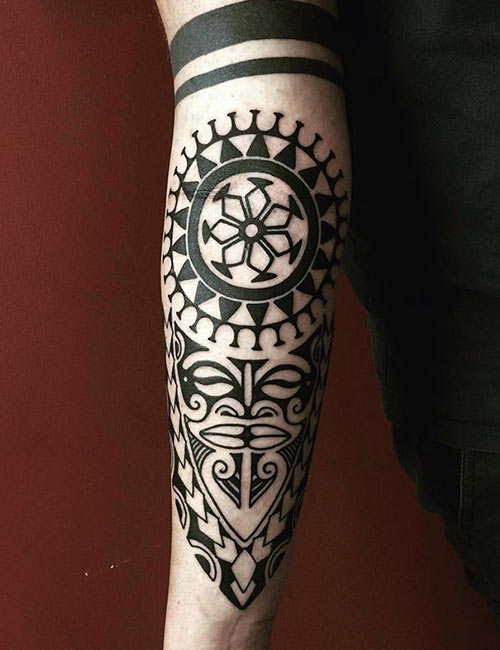
The History and Cultural Significance of Maori Tattoos
Before the arrival of Europeans in New Zealand, the Maori people used tattoos as a form of identification, rank, and status. This traditional art of Maori tattooing is known as ta moko. Ta moko involves the process of carving designs into the skin using chisels, instead of puncturing the skin with needles like in modern tattooing techniques.
Ta moko was an important aspect of Maori culture and was passed down through generations of Maori artists. In Maori society, the ability to create tattoos was considered a sacred tradition that held immense cultural and spiritual significance. The skills and knowledge required for creating these intricate designs were acquired through years of apprenticeship under experienced ta moko artists.
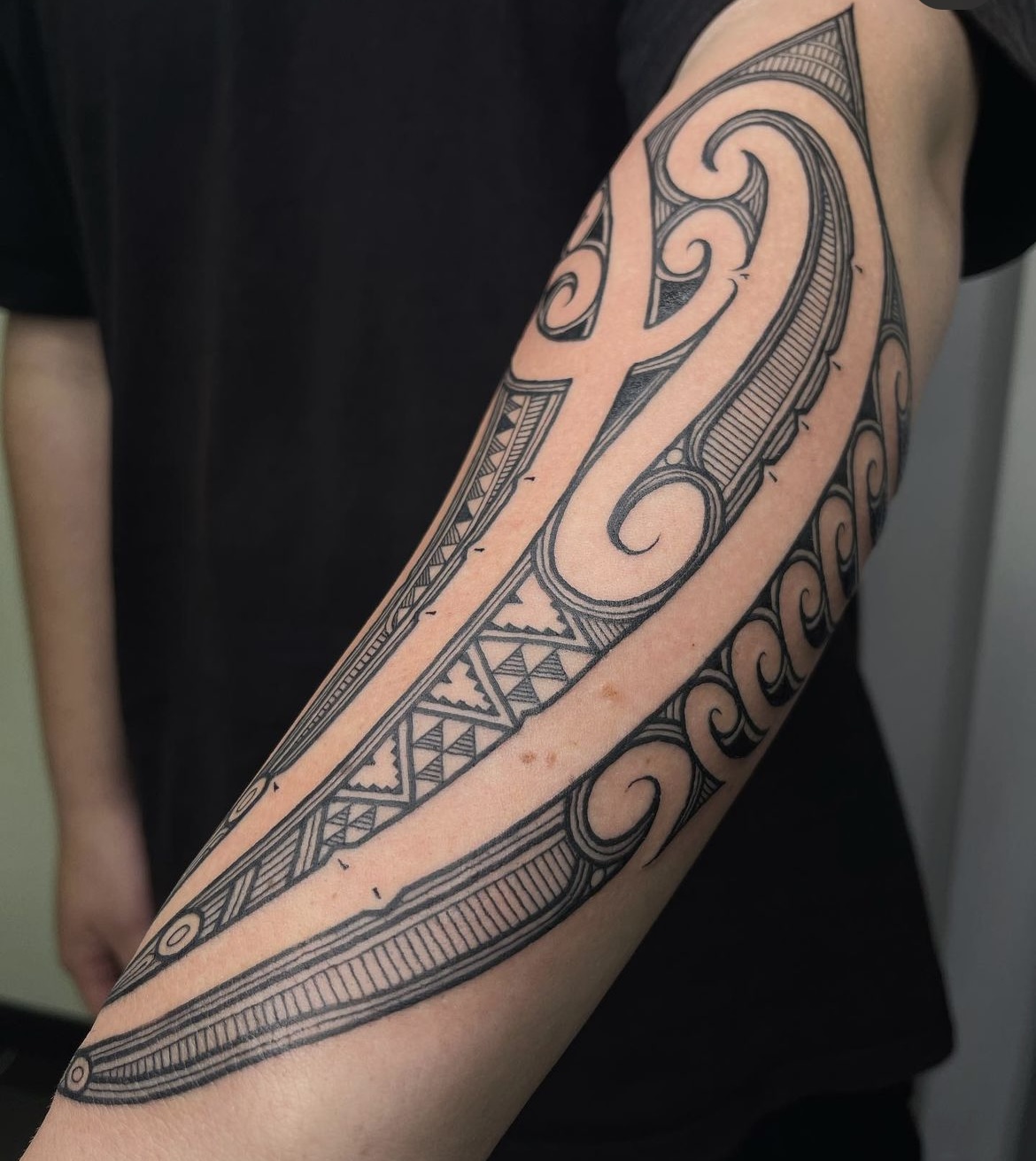
Each ta moko design was unique and held deep cultural and spiritual significance. The tattoos were not just decorative, but also communicated information about the wearer’s ancestry, social standing, and personal achievements. For example, facial tattoos were reserved for high-ranking individuals, such as chiefs, and the placement and design of the tattoos would indicate their lineage and status within the community.
The process of getting a ta moko was a ritualistic experience that involved both physical and spiritual preparation. Before the tattooing process, the recipient would fast and undergo a period of self-reflection to prepare themselves for the pain and the significance of the tattoo. The tattooing itself was often accompanied by chanting, singing, and other spiritual practices to reinforce the cultural importance of the tradition.
Despite the arrival of European settlers and their introduction of modern tattooing techniques, ta moko has continued to be an important tradition in Maori culture. Today, many Maori individuals still choose to get ta moko tattoos as a way of connecting to their cultural heritage and honoring their ancestors. The revival of ta moko in contemporary times has been accompanied by a renewed appreciation and respect for the skill and cultural significance of this traditional art form.
Symbols and Meanings of Popular Maori Tattoo Designs
Koru
The koru tattoo is a unique and highly symbolic design that is deeply rooted in Maori culture, one of the indigenous people of New Zealand. The koru itself is a spiral shape that is reminiscent of an unfurling fern frond, and it represents new beginnings, growth, and harmony. The koru is often used in Maori art and tattoo designs to represent the cycle of life and the natural world.
In Maori culture, the koru symbolizes the idea of perpetual motion and continuous renewal. It is said to represent the stages of human life, from birth to death and beyond. The spiral shape of the koru starts small and tight at the center, then gradually grows and expands outward, just like the journey of life and the progression of time. As the koru unfolds, it symbolizes the growth and development of a person or community, as well as the interconnectedness of all living things.
The koru is also closely associated with nature and the environment. In Maori culture, the land, sea, and sky are seen as sacred entities that must be respected and protected. The koru embodies this reverence for the natural world by representing the cycle of growth and renewal that occurs in plants and animals. It is a reminder that we are all part of a larger ecosystem and that our actions have consequences that ripple throughout the world.
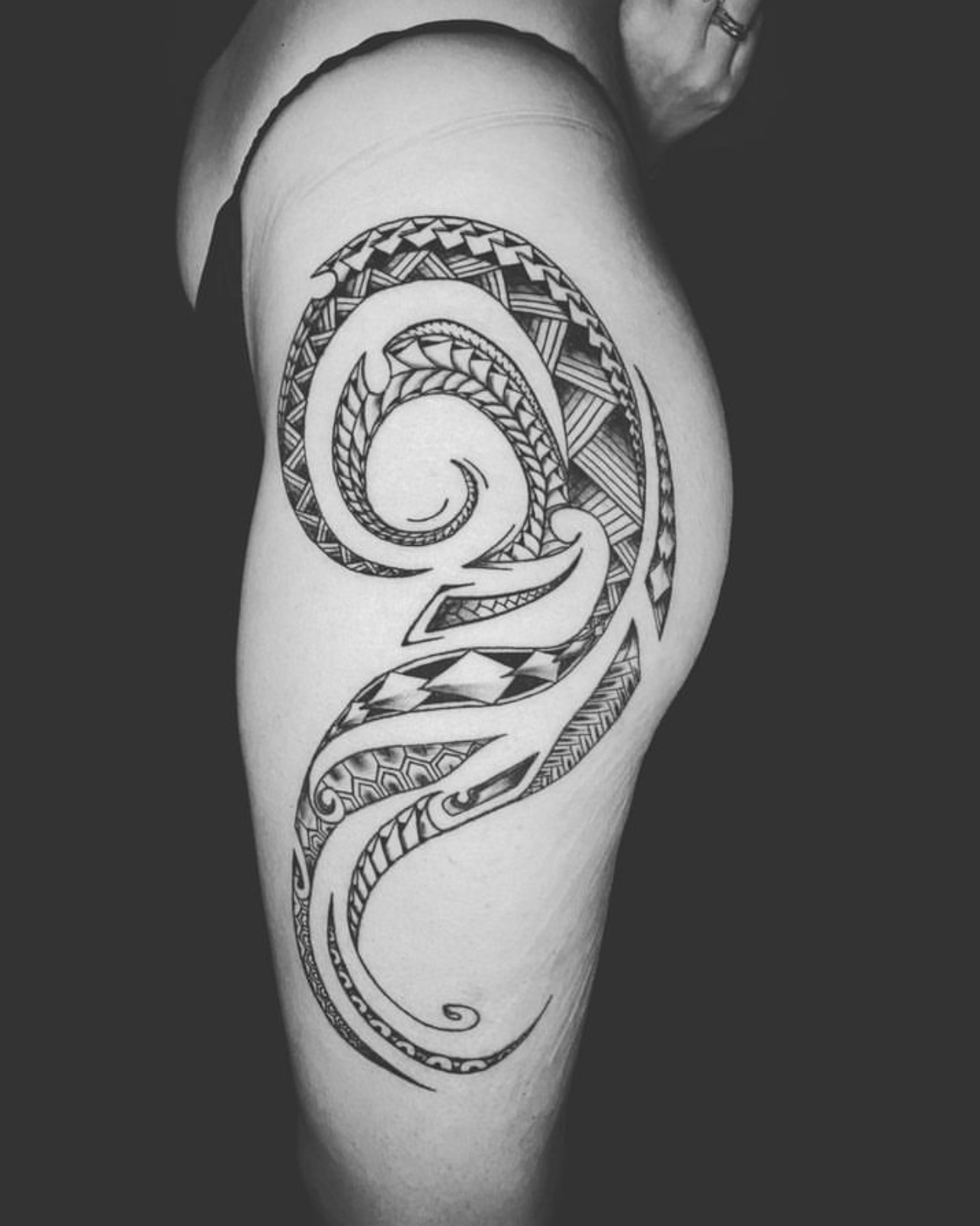
When used as a tattoo design, the koru can be customized to reflect different aspects of a person’s personality or life journey. Some people choose to incorporate other elements of Maori art, such as kowhaiwhai (decorative patterns) or tiki (carvings), into their koru tattoos. Others may add additional symbols or imagery that hold personal significance, such as animals or spiritual icons.
Tiki
The tiki tattoo is a significant cultural symbol in Maori mythology that represents the creation of humankind. According to legend, the first man in Maori mythology was created by the gods using red clay from the earth. The gods breathed life into the figure and named him Tiki, which means “first man” in Maori.
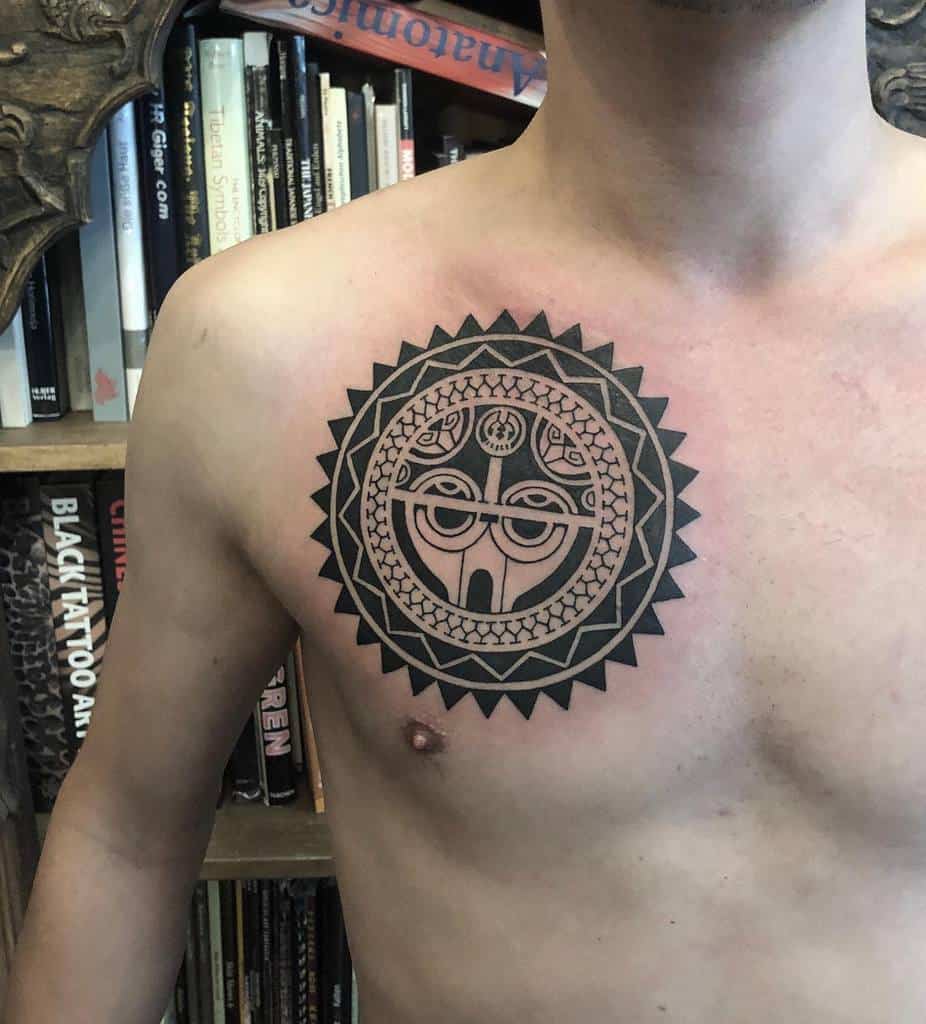
In Maori culture, the tiki figure is revered as a symbol of fertility, strength, and protection. It is often depicted with large eyes and an elongated tongue, both of which are associated with strength and protection. The large eyes represent heightened awareness and vigilance, while the elongated tongue symbolizes the ability to ward off evil spirits and protect against harm.
The tiki tattoo is a popular choice for many people who want to honor the rich cultural heritage of Maori mythology. The tattoo is often placed on the body in a location that is easily visible, such as the arm, chest, or back. The design typically features intricate patterns and bold lines that capture the essence of the tiki figure.
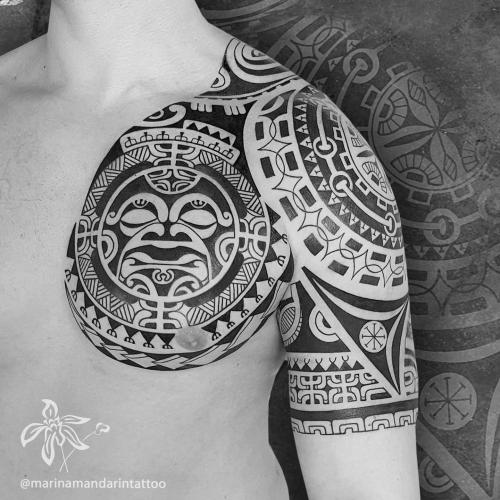
One of the key meanings behind the tiki tattoo is its association with protection. For many people, getting a tiki tattoo is a way to invite positive energy and ward off negative influences. The tattoo serves as a reminder that one is protected and safe from harm, and that they have the strength and resilience to overcome any obstacles that may come their way.
Other meanings associated with the tiki tattoo include its connection to fertility and the creation of new life. In Maori mythology, Tiki was the first man and was responsible for the creation of humankind. Many people get tiki tattoos as a way to honor this connection and to celebrate the creation of new life.
Manaia
The manaia tattoo is a design that features a mythical creature that is half-human and half-bird. This creature is steeped in rich Maori culture, where it holds deep spiritual significance as a symbol of protection, balance, and connection to the spiritual realm.
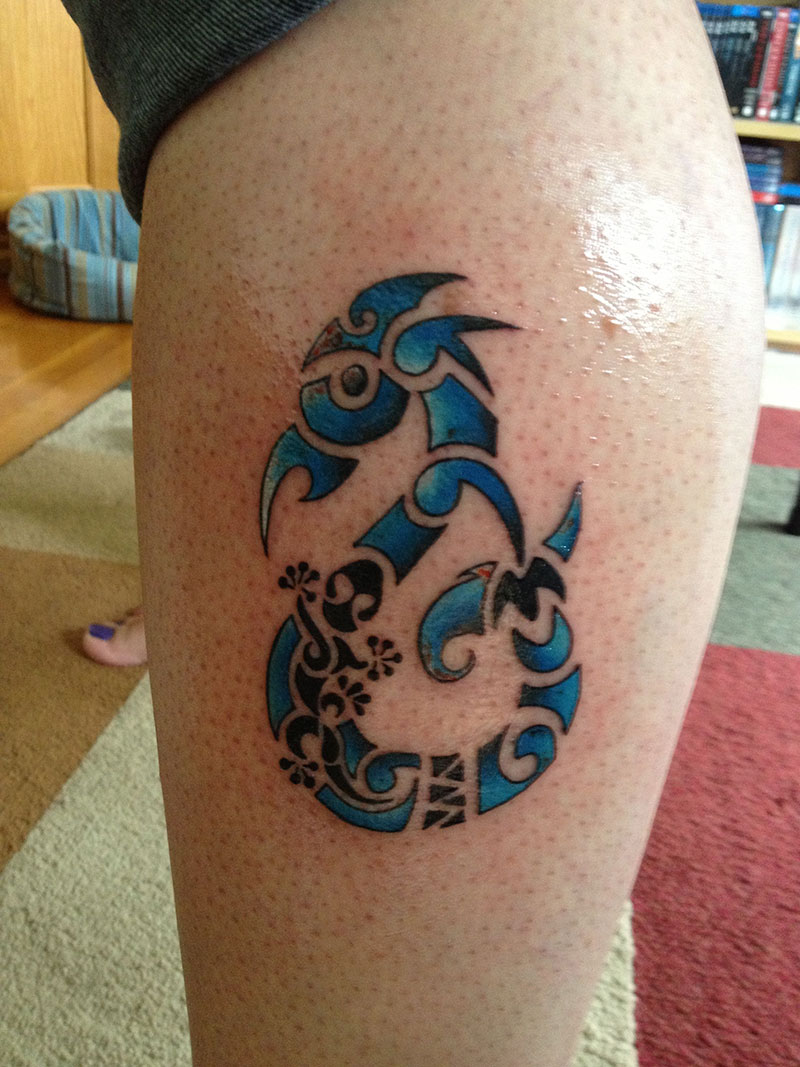
In Maori tradition, the manaia represents the soul’s journey from one world to another. It serves as a guardian or protector against evil spirits and negative energies, ensuring that the wearer is shielded from harm. The manaia can also be seen as a mediator between the physical and spiritual realms, guiding individuals through life’s challenges.
The manaia is often depicted with an elongated beak and wings. The beak is thought to represent strength and determination, while the wings symbolize freedom and the ability to transcend earthly limitations. Together, they create a powerful image that embodies the essence of spiritual transformation.
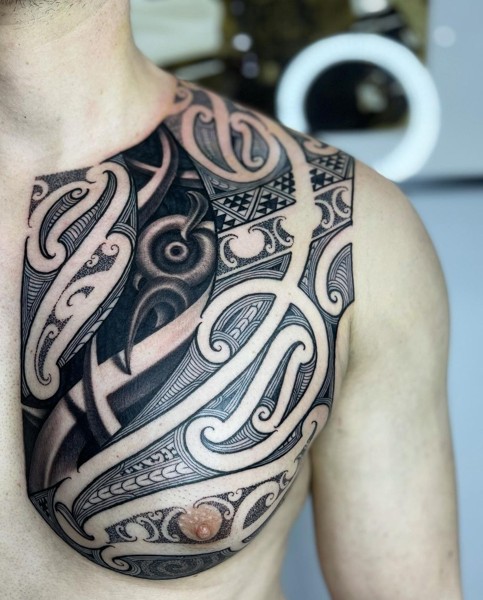
The manaia tattoo is a popular choice for those seeking a meaningful and spiritually significant design. Its intricate details and symbolism make it a beautiful and powerful statement piece. Whether worn on its own or combined with other traditional Maori designs, the manaia tattoo is a timeless and deeply meaningful choice for anyone looking to honor their cultural heritage or embrace the power of spirituality.
Taiaha
The taiaha is a traditional Maori weapon that has been in use for centuries. It is a pole weapon that typically measures between 1.5 and 1.8 meters in length and features a pointed blade at one end, and a carved head at the other. The blade is used for thrusting and striking, while the head is used for blocking and striking as well.

In Maori culture, the taiaha holds great significance as a symbol of strength, courage, and protection. It was traditionally used by chiefs and warriors to defend their tribes and communities. The taiaha is considered a sacred object, and its use requires great skill and discipline.
The taiaha is often depicted in Maori tattoos as a way to represent these same qualities. A taiaha tattoo can be a powerful symbol of strength and resilience, reminding the wearer of their own inner fortitude and ability to overcome obstacles. It can also serve as a reminder of the importance of protecting oneself and others.
In addition to its symbolic meaning, the taiaha tattoo can also be a visually striking design. The intricate carvings and flowing lines of the taiaha can create a dynamic and powerful image, whether rendered in traditional black ink or with additional colors.
Hei Matau
The hei matau tattoo is a highly significant and revered symbol in Maori culture, representing prosperity, abundance, and good luck. The design of the tattoo is based on the shape of a fish hook, which is a crucial tool for fishing in Maori culture. The fish hook has been used for centuries by the Maori people to catch fish, which was an important source of food, as well as a symbol of wealth and prosperity.
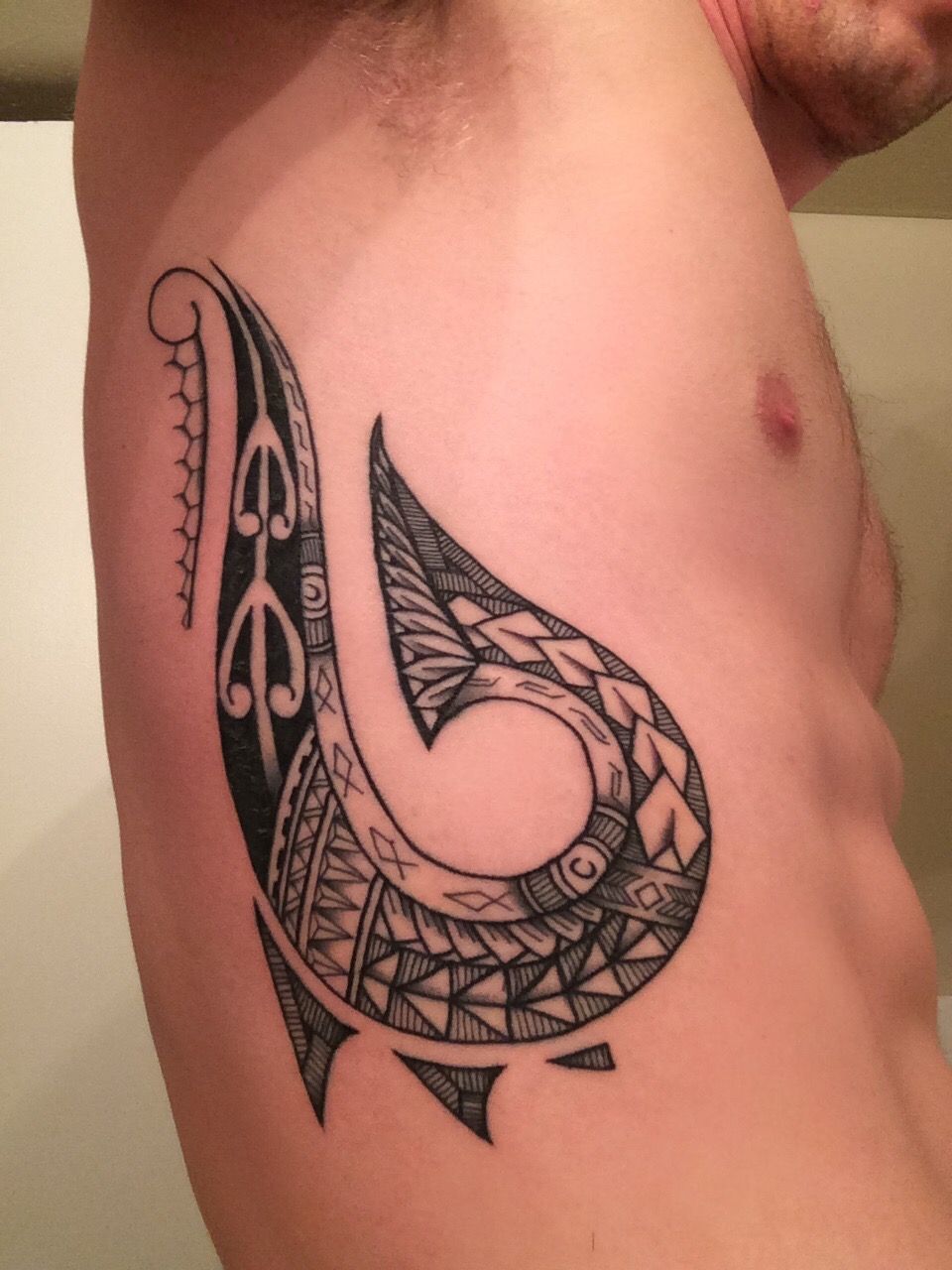
In Maori mythology, the story of Maui, the great fisherman, further reinforces the significance of the fish hook symbol. According to legend, Maui used a fish hook made from the jawbone of his ancestor to catch the biggest fish in the ocean, which was said to have created New Zealand’s North Island. This story highlights the importance of fishing and the deep connection between the Maori people and the ocean.
The hei matau tattoo is commonly used in Maori tattoos and is often placed on the body in areas that are visible, such as the arm or leg. The tattoo design usually features intricate and detailed patterns, which vary depending on the individual’s lineage and personal beliefs. The tattoo is considered a powerful symbol of identity and connection to one’s heritage, and it’s traditionally earned through a rite of passage.
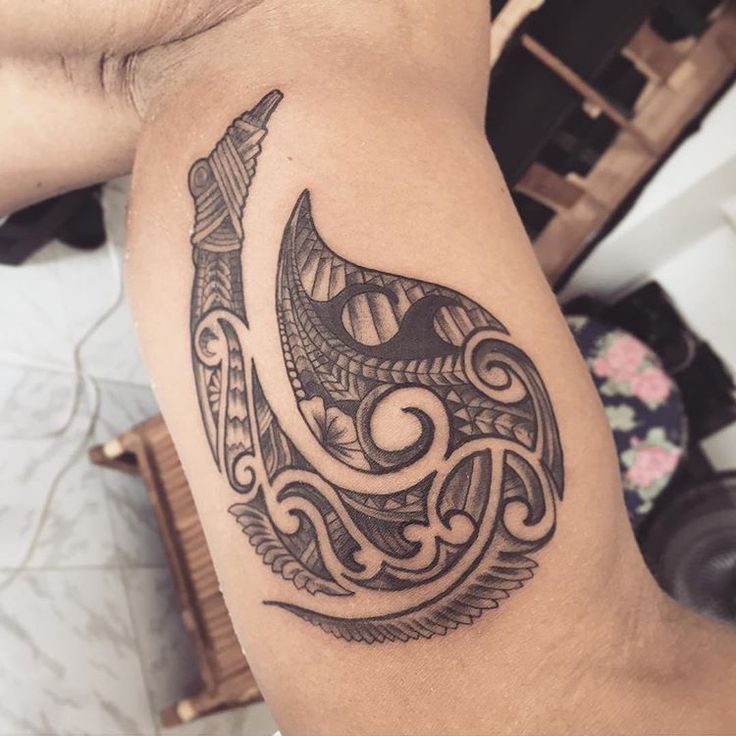
In addition to its cultural and symbolic significance, the hei matau tattoo also has aesthetic appeal and can be a visually stunning piece of art. The use of black ink and bold lines creates a striking design that stands out on the skin, making it a popular choice for those seeking a meaningful and beautiful tattoo.
Conclusion
Maori tattoos have a rich cultural history and are an important aspect of Maori culture. Each tattoo design has its own unique meaning and symbolism, making it a powerful way to connect with one’s cultural heritage and identity. Whether you are Maori or simply inspired by Maori art and traditions, a Maori tattoo can be a beautiful and meaningful tribute to your ancestry and cultural heritage.

I am Harvey Berry, a tattoo enthusiast who has immersed himself in the diverse world of ink, passionately exploring the beauty and artistry within each tattoo. My mission extends beyond uncovering the aesthetics of tattooing; it involves sharing in-depth knowledge across all aspects of this art form.
Fueled by genuine curiosity and love for every facet of tattooing, I have diligently crafted well-researched articles, with a special focus on the Tattoo Meaning of Impeccable Nest section. Here, my aim is to help the tattoo community gain a deeper understanding of the meanings and values embedded in each tattoo.
One of my primary goals is to encourage responsible decision-making when it comes to getting inked. I recognize that choosing to get a tattoo is a significant personal decision that requires careful consideration. Hence, I provide diverse resources covering the meaning of tattoos, the tattooing process, aftercare tips, and other valuable information.
Whether you are a seasoned tattoo enthusiast or embarking on your first exploration of the world of body art, I aspire to be a reliable resource for you at every step of your journey. I hope that my extensive knowledge of tattoos, especially in the Tattoo Meaning section, will assist you in finding inspiration to express yourself through the art of tattoos.
